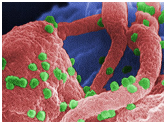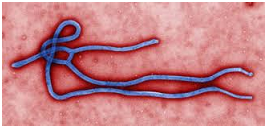

Common pathogenic viruses
1.Rhinovirus
Rhinovirus (rhin means "nose") infections cause the common cold. Rhinoviruses may also cause some sore throats, ear infections, and infections of the sinuses (openings in the bone near the nose and eyes).

2. Adenovirus
Adenoviruses are common viruses that cause a range of illness. They can cause cold-like symptoms, fever, sore throat, bronchitis, pneumonia, diarrhea, and pink eye (conjunctivitis).

3. Enterovirus
Enterovirus is a genus of positive-sense single-stranded RNA viruses associated with several human and mammalian diseases. Enteroviruses are named by their transmission-route through the intestine (enteric meaning intestinal).

4. Herpes virus
Herpes is an infection caused by HSV (herpes simplex virus). This virus affects the external genitalia, anal region, mucosal surfaces, and skin in other parts of the body. Herpes is a long-term condition.

5. Influenza virus
H5N1: A type of influenza virus that causes a highly infectious, severe respiratory disease in birds called avian influenza (or "bird flu")

H1N1: Subtype of influenza A virus that was the most common cause of human influenza (flu) in 2009, and is associated with the 1918 outbreak known as the Spanish flu.

6. Rabies virus
Rabies is a viral infection that mainly spreads through a bite from an infected animal. It is an RNA virus of the rhabdovirus family. Without early treatment, it is usually fatal. The virus can affect the body in one of two ways: It enters the peripheral nervous system (PNS) directly and migrates to the brain.

7. Hepatitis virus
Viral infections of the liver that are classified as hepatitis include hepatitis A, B, C, D, and E. A different virus is responsible for each type of virally transmitted hepatitis.

8. Human papillomavirus (HPV)
A viral infection that's passed between people through skin-to-skin contact. There are over 100 varieties of HPV, more than 40 of which are passed through sexual contact and can affect your genitals, mouth, or throat.

9. Human immunodeficiency virus (HIV)
HIV (human immunodeficiency virus) is a virus that attacks cells that help the body fight infection, making a person more vulnerable to other infections and diseases.

10. West Nile virus
West Nile Virus (WNV) can cause neurological disease and death in people. WNV is commonly found in Africa, Europe, the Middle East, North America and West Asia. WNV is maintained in nature in a cycle involving transmission between birds and mosquitoes. Humans, horses and other mammals can be infected.

11. Ebola Virus Disease (EVD)
Ebola Virus Disease (EVD) is a rare and deadly disease in people and nonhuman primates.

12. SARS coronavirus (SARS-CoV)
SARS coronavirus (SARS-CoV) – virus identified in 2003. SARS-CoV is thought to be an animal virus from an as-yet-uncertain animal reservoir, perhaps bats, that spread to other animals (civet cats) and first infected humans in the Guangdong province of southern China in 2002.

13. Middle East Respiratory Syndrome (MERS)
Middle East Respiratory Syndrome (MERS) is an illness caused by a virus (more specifically, a coronavirus) called Middle East Respiratory Syndrome Coronavirus (MERS-CoV). Most MERS patients developed severe respiratory illness with symptoms of fever, cough and shortness of breath.

14. COVID-19
A novel coronavirus disease which was first reported from Wuhan, China, on 31 December 2019.

Reference:
1. Carl Zimmer, A Planet of Viruses (Second Edition)